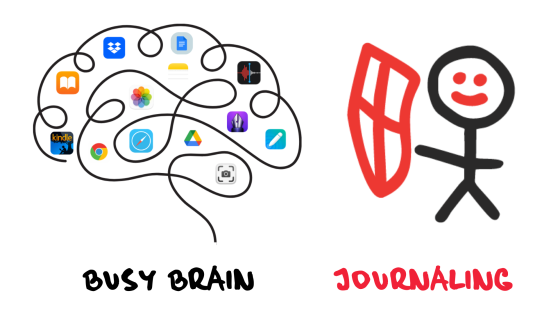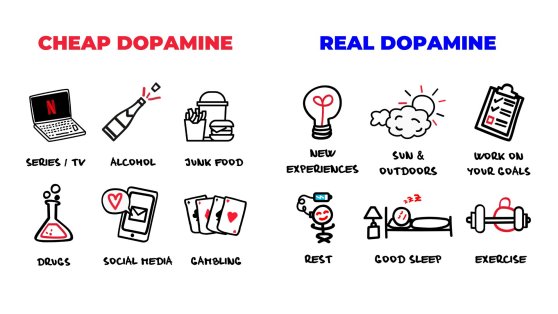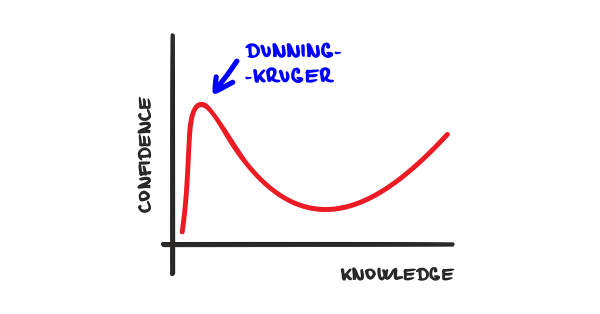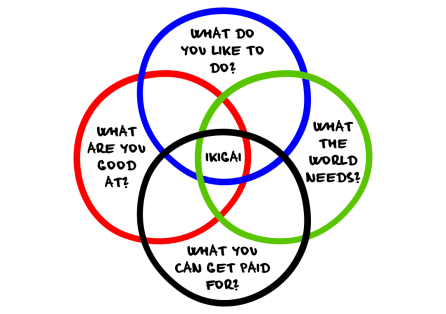Blog article
Why Does a "To-Do Today" List Work?
Posted by Petr LudwigTangible, simple, and visual, the To-Do Today represents a revolutionary update to the old To-Do List. Make creating one your next habit.
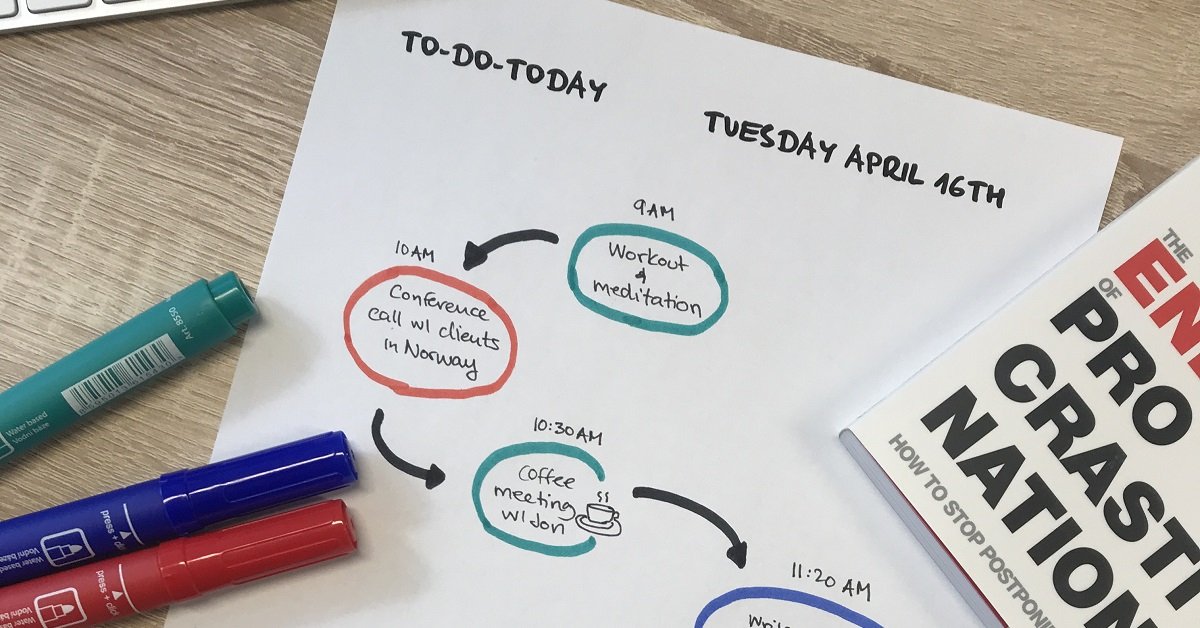
You have more tasks on your plate than you have time for and new tasks pop up faster than you can process them. This causes pressure, which results in a high level of stress. This stress leads to poor sleeping habits and subsequently a lack of energy and the inability to deal with tasks effectively.
Sound familiar? If this is you, there’s good news: you don’t just need a to-do list. You need a To-Do Today.
The To-Do Today method, is one of the methods designed in The End of Procrastination to help those with small or large procrastinating problems. It helps you get the most important and urgent tasks done every day, while also helping you triage the work on your schedule, limit new tasks, and learn how to delegate those that are not necessary for you to complete.
Using this method will help you overcome the driving forces of low discipline and increase your effectiveness. It will help you fight against decision paralysis and lower your aversion to performing large and complicated tasks. In the long run, it will not only increase the odds of you actually getting to work on your tasks — it’ll help you actually finish them, too.
What distinguishes the To-Do Today method from any other to-do list?
It doesn’t use a list at all. Instead, it uses visual mind maps, which clearly and visually present the information you need. The visual cortex is the most developed part of the human brain, making this method more natural and effective.
Get Your Copy Of Our To-Do Today Guidelines Now
So how does To-Do Today work?
This video is part of an online course. If you want to learn more about how to beat procrastination and be more efficient, check it out.
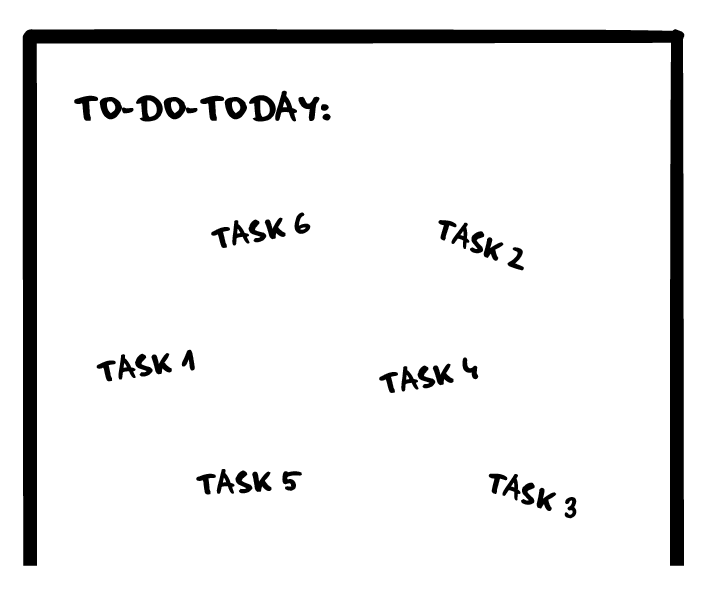
The following guidelines will significantly increase the number of tasks you’re able to handle on a daily basis. These principles help you optimize your day without experiencing decision paralysis or feeling exhausted at the end of the day.
Lay out your tasks - Take a blank piece of paper and randomly write down all of the tasks you’d like to do.
Give each task a concrete and pleasant name - You’ll have a better at-a-glance understanding of what it requires, and thus feel less aversion to it.
Split large tasks up and combine small ones together - Each task should take somewhere between 30-60 minutes to complete. Large and complicated tasks cause avoidance by suggesting you ought to get it all done in one go, and breaking them up will decrease that aversion. Very small tasks, such as “Write one email,” should be combined into one larger task: “Write all emails.” Batching related tasks cuts down on temptation to shift attention, and thus will not disrupt your flow.
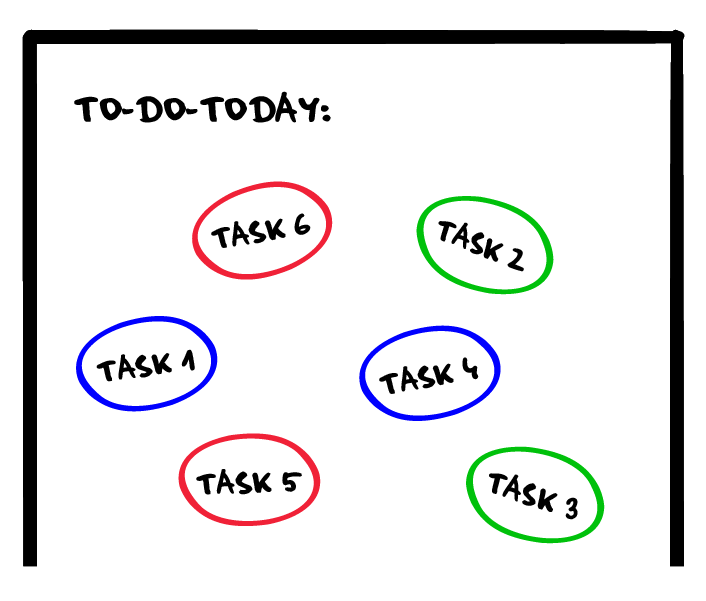
Color code your priorities - Draw a red circle around the tasks that are of highest priority, a blue around those of medium priority, and a green around the lowest-priority tasks.
Define your path for the day - Link your tasks together with arrows. The path you make should follow the best order for completing them. Begin with the highest-priority tasks at the start of the day, when your cognitive resources are at their highest. This path is critical for fighting decision paralysis: you won’t waste time thinking about what to do next.
Make time estimates - Plan when you will start working on each task and when you want to finish it. Stick to these times as though they are important appointments. If you have an exact time to start an activity, you’ve improved the odds that you actually will start it.
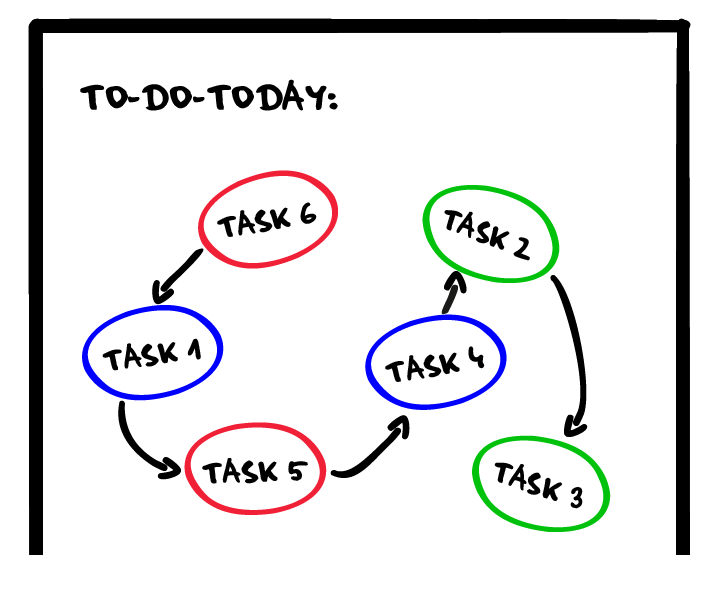
Focus on the one thing only - Once you begin, concentrate only on the task at hand. Limiting distractions will help you find your state of flow more easily, and creating peace ensures that nothing will disrupt you.
Learn when to stop - Once you finish a task, cross it out and bring it to a close. Some people have trouble not just starting, but finishing.
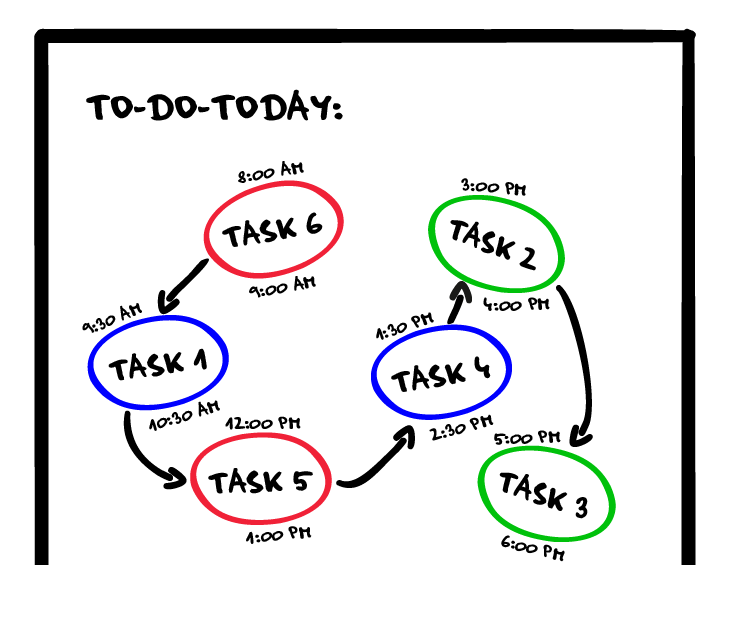
Replenish your cognitive resources - Plan short breaks in between tasks so you can restore your energy. Once you get to an arrow, do something that will renew your willpower - go for a short walk, have a glass of water, or simply let your brain rest for a bit. Don’t take a rest only when you feel the need to do so.
Make a habit out of creating a To-Do Today - Ideally, you should prepare your To-Do Today every evening for the following day — a To-Do Tomorrow, so to speak. You’ll sleep much better knowing you have the whole day planned out!
So why does this work?
It works because of its tangibility and simplicity. Stripped of any unnecessary complexity, this format is less likely to cause aversion than a traditional list, which tend to be long and vague without creating a helpful flow.
The simplicity of the visual arrangement is crucial, too. By color-coding your priorities, just one look is enough to let you know what awaits you during the day and what comes next. And by committing your tasks to paper, they take up less space in your brain and are less likely to be forgotten.
Ready to try it out?
Go ahead - and tag us on social media with #EndOfProcrastination. We’d love to see your flow in action.
Get Your Copy Of Our To-Do Today Guidelines Now
Additional sources
- Book: The End of Procrastination: How to Stop Postponing and life a Fulfilled Life, Petr Ludwig, Adela Schicker, St. Martin's Essentials, 2018, ISBN: 978-1250308054
- Book: The Paradox of Choice – Why More Is Less, Barry Schwartz, Harper Perennial, 2004, ISBN: 0-06-000568-8
- Article: Decision Paralysis: How To Stop Overthinking Choices, Petr Ludwig
